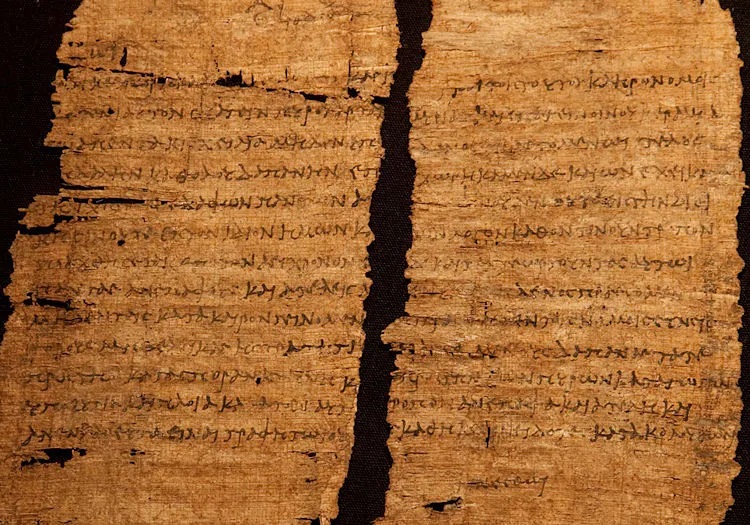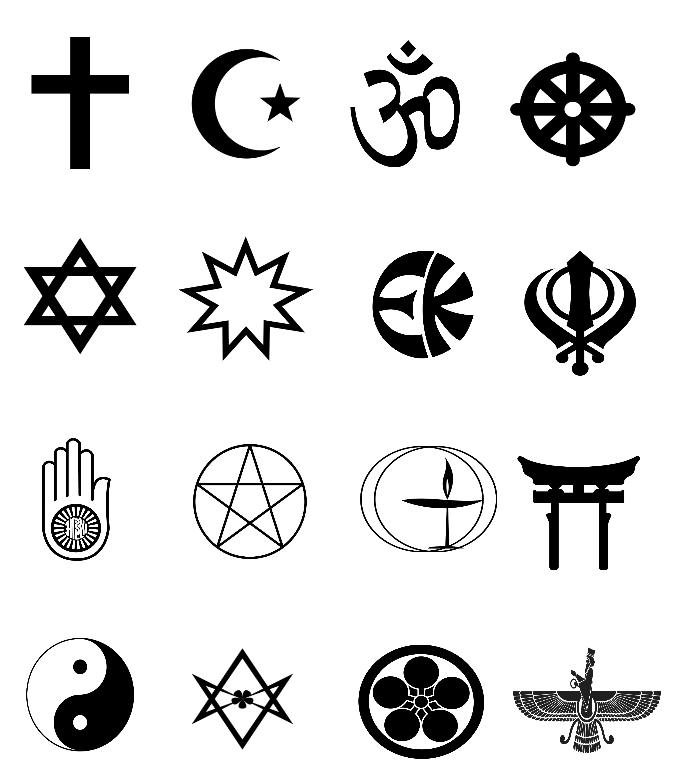|
Syncretism
Syncretism () is the practice of combining different beliefs and various school of thought, schools of thought. Syncretism involves the merging or religious assimilation, assimilation of several originally discrete traditions, especially in the theology and mythology of religion, thus asserting an underlying unity and allowing for an Inclusivism, inclusive approach to other faiths. While syncretism in art and culture is sometimes likened to eclecticism, in the realm of religion, it specifically denotes a more integrated merging of beliefs into a unified system, distinct from eclecticism, which implies a selective adoption of elements from different traditions without necessarily blending them into a new, cohesive belief system. Etymology The English word is first attested in the early 17th century. It is from Neo-Latin, Modern Latin , drawing on the (), supposedly meaning "Cretan federation". However, this is a spurious etymology derived from the naive idea in Plutarch's 1st- ... [...More Info...] [...Related Items...] OR: [Wikipedia] [Google] [Baidu] |
Religious Assimilation
Religious assimilation refers to the adoption of a majority or dominant culture's Religion, religious practices and beliefs by a minority or subordinate culture. It is an important form of cultural assimilation. Religious assimilation includes the religious conversion of individuals from a minority faith to the dominant faith. It can also include the religious indoctrination of children into a dominant religion by their converted parents. However, religious assimilation need not involve wholesale adoption of a dominant religious belief system by a minority; the concept is broad enough to include alterations in the frequency of religious participation to match that of the dominant culture. Indeed, religious assimilation among Immigration, immigrant groups most commonly involves such minor changes, rather than sweeping change in religious belief systems. Forms of religious assimilation Gradual changes In sharp contrast to other aspects of cultural assimilation such as language ... [...More Info...] [...Related Items...] OR: [Wikipedia] [Google] [Baidu] |
Hellenistic
In classical antiquity, the Hellenistic period covers the time in Greek history after Classical Greece, between the death of Alexander the Great in 323 BC and the death of Cleopatra VII in 30 BC, which was followed by the ascendancy of the Roman Empire, as signified by the Battle of Actium in 31 BC and the Roman conquest of Ptolemaic Egypt the following year, which eliminated the last major Hellenistic kingdom. Its name stems from the Ancient Greek word ''Hellas'' (, ''Hellás''), which was gradually recognized as the name for Greece, from which the modern historiographical term ''Hellenistic'' was derived. The term "Hellenistic" is to be distinguished from "Hellenic" in that the latter refers to Greece itself, while the former encompasses all the ancient territories of the period that had come under significant Greek influence, particularly the Hellenized Middle East, after the conquests of Alexander the Great. After the Macedonian conquest of the Achaemenid Empire in ... [...More Info...] [...Related Items...] OR: [Wikipedia] [Google] [Baidu] |
Religion
Religion is a range of social system, social-cultural systems, including designated religious behaviour, behaviors and practices, morals, beliefs, worldviews, religious text, texts, sanctified places, prophecies, ethics in religion, ethics, or religious organization, organizations, that generally relate humanity to supernatural, transcendence (religion), transcendental, and spirituality, spiritual elements—although there is no scholarly consensus over what precisely constitutes a religion. It is an essentially contested concept. Different religions may or may not contain various elements ranging from the divine, sacredness, faith,Tillich, P. (1957) ''Dynamics of faith''. Harper Perennial; (p. 1). and a supernatural being or beings. The origin of religious belief is an open question, with possible explanations including awareness of individual death, a sense of community, and dreams. Religions have sacred histories, narratives, and mythologies, preserved in oral traditions, sac ... [...More Info...] [...Related Items...] OR: [Wikipedia] [Google] [Baidu] |
Inclusivism
Inclusivism is one of several approaches in religious studies, anthropology, or civics to understand the relationship between different religions, societies, cultures, political factions etc. It asserts that there is beauty in the variety of different schools of thoughts, and that they can coexist. It stands in contrast to exclusivism, which asserts that only one way is true and all others are erroneous. Within religious studies and theology, inclusivism is the belief that, although only one belief system is true, aspects of its truth can be found in other religions. This is contrasted from religious pluralism, which asserts that all beliefs are equally valid within a believer's particular context. Broadly speaking, there are two schools of Inclusivist thought: * Relativistic inclusivism, which asserts that the believer's own views are true only in their particular context, and believers of other traditions have their own validity. * Absolutist inclusivism, which asserts that an ... [...More Info...] [...Related Items...] OR: [Wikipedia] [Google] [Baidu] |
Atlanersa
Atlanersa (also Atlanarsa) was a Kingdom of Kush, Kushite ruler of the Napata#Late Napatan kingdom, Napatan kingdom of Nubia, reigning for about a decade in the mid-7th century BC. He was the successor of Tantamani, the last ruler of the Twenty-fifth Dynasty of Egypt, 25th Dynasty of Egypt, and possibly a son of Taharqa or less likely of Tantamani, while his mother was a queen whose name is only partially preserved. Atlanersa's reign immediately followed the collapse of Nubian control over Egypt, which witnessed the Assyrian conquest of Egypt and then the beginning of the Late Period of ancient Egypt, Late Period under Psamtik I. The same period also saw the progressive cultural integration of Egyptian beliefs by the Kushite civilization. Atlanersa may have fathered his successor Senkamanisken with his consort Malotaral, although Senkamanisken could also be his brother. He built a pyramid in the necropolis of Nuri, now conjecturally believed to be Nuri 20 and may also h ... [...More Info...] [...Related Items...] OR: [Wikipedia] [Google] [Baidu] |
Pluto Serapis And Persephone Isis Heraklion Museum
Pluto (minor-planet designation: 134340 Pluto) is a dwarf planet in the Kuiper belt, a ring of Trans-Neptunian object, bodies beyond the orbit of Neptune. It is the ninth-largest and tenth-most-massive known object to directly orbit the Sun. It is the largest known trans-Neptunian object by volume by a small margin, but is less massive than Eris (dwarf planet), Eris. Like other Kuiper belt objects, Pluto is made primarily of ice and rock and is much smaller than the inner planets. Pluto has roughly one-sixth the mass of the Moon and one-third its volume. Originally considered a planet, its classification was changed when astronomers adopted a new definition of planet, definition of ''planet''. Pluto has a moderately Orbital eccentricity, eccentric and Inclination, inclined orbit, ranging from from the Sun. Light from the Sun takes 5.5 hours to reach Pluto at its orbital distance of . Pluto's eccentric orbit periodically brings it closer to the Sun than Neptune, but a stabl ... [...More Info...] [...Related Items...] OR: [Wikipedia] [Google] [Baidu] |
Dedun
Dedun (or Dedwen) was a Kushite or Nehasi ( C-Group culture) god worshipped during ancient times in ancient Egypt and Sudan and attested as early as 2400 BC. There is much uncertainty about their original nature, especially since he was depicted as a lion, a role that usually was assigned to the son of another deity. Nothing is known of the earlier Kushite mythology from which the deity arose, however. The earliest known information in Egyptian writings about Dedun indicates that he already had become a god of incense by the time of the writings. Since at that historical point, incense was an extremely expensive luxury commodity, and Nubia was the source of much of it, he was quite an important deity. The wealth that the trade in incense delivered to Nubia led to his being identified by them as the god of prosperity and of wealth in particular. Although he is mentioned in the Pyramid Texts of ancient Egypt as being a Nubian deity, there is no evidence that Dedun was worshipped ... [...More Info...] [...Related Items...] OR: [Wikipedia] [Google] [Baidu] |
Kushite
The Kingdom of Kush (; Egyptian: 𓎡𓄿𓈙 𓈉 ''kꜣš'', Assyrian: ''Kûsi'', in LXX Χους or Αἰθιοπία; ''Ecōš''; ''Kūš''), also known as the Kushite Empire, or simply Kush, was an ancient kingdom in Nubia, centered along the Nile Valley in what is now northern Sudan and southern Egypt. The region of Nubia was an early cradle of civilization, producing several complex societies that engaged in trade and industry. The city-state of Kerma emerged as the dominant political force between 2450 and 1450 BC, controlling the Nile Valley between the first and fourth cataracts, an area as large as Egypt. The Egyptians were the first to identify Kerma as "Kush" probably from the indigenous ethnonym "Kasu", over the next several centuries the two civilizations engaged in intermittent warfare, trade, and cultural exchange. Much of Nubia came under Egyptian rule during the New Kingdom period (1550–1070 BC). Following Egypt's disintegration amid the Late Bronze ... [...More Info...] [...Related Items...] OR: [Wikipedia] [Google] [Baidu] |
Twenty-fifth Dynasty Of Egypt
The Twenty-fifth Dynasty of Egypt (notated Dynasty XXV, alternatively 25th Dynasty or Dynasty 25), also known as the Nubian Dynasty, the Kushite Empire, the Black Pharaohs, or the Napatans, after their capital Napata, was the last dynasty of the Third Intermediate Period of Egypt that occurred after the Kushite invasion. The 25th dynasty was a line of pharaohs who originated in the Kingdom of Kush, located in present-day northern Sudan and Upper Egypt. Most of this dynasty's kings saw Napata as their spiritual homeland. They reigned in part or all of Ancient Egypt for nearly a century, from 744 to 656 BC. The 25th dynasty was highly Egyptianized, using the Egyptian language and writing system as their medium of record and exhibiting an unusual devotion to Egypt's religious, artistic, and literary traditions. Earlier scholars have ascribed the origins of the dynasty to immigrants from Egypt, particularly the Egyptian Amun priests. The third intermediate-period Egyptian ... [...More Info...] [...Related Items...] OR: [Wikipedia] [Google] [Baidu] |
Manetho
Manetho (; ''Manéthōn'', ''gen''.: Μανέθωνος, ''fl''. 290–260 BCE) was an Egyptian priest of the Ptolemaic Kingdom who lived in the early third century BCE, at the very beginning of the Hellenistic period. Little is certain about his life. He is known today as the author of a history of Egypt in Greek called the '' Aegyptiaca'' (''History of Egypt''), written during the reign of Ptolemy I Soter or Ptolemy II Philadelphus (285–246 BCE). None of Manetho’s original texts have survived; they are lost literary works, known only from fragments transmitted by later authors of classical and late antiquity. The remaining fragments of the ''Aegyptiaca'' continue to be a singular resource for delineating Egyptian chronology, more than two millennia since its composition. Until the decipherment of Ancient Egyptian scripts in the early 19th century CE, Manetho's fragments were an essential source for understanding Egyptian history. His work remains of unique importan ... [...More Info...] [...Related Items...] OR: [Wikipedia] [Google] [Baidu] |
Jebel Barkal
Jebel Barkal or Gebel Barkal () is a mesa or large rock outcrop located 400 km north of Khartoum, next to Karima in Northern State in Sudan, on the Nile River, in the region that is sometimes called Nubia. The jebel is 104 m tall, has a flat top, and came to have religious significance for both ancient Kush and ancient Egyptian occupiers. In 2003, the mountain, together with the extensive archaeological site at its base (ancient Napata), were named as the center of a World Heritage Site by UNESCO. The Jebel Barkal area houses the Jebel Barkal Museum. History The earliest occupation of Jebel Barkal was that of the Kerma culture, which was also known as Kush, but this occupation is so far known only from scattered potsherds. Around 1450 BCE, the Egyptian Pharaoh Thutmose III conquered Barkal and built a fortified settlement (Egyptian ''menenu'') there as the southern limit of the Egyptian empire. The city and region around it came to be called Napata, and the Egyptian o ... [...More Info...] [...Related Items...] OR: [Wikipedia] [Google] [Baidu] |
Osiris
Osiris (, from Egyptian ''wikt:wsjr, wsjr'') was the ancient Egyptian deities, god of fertility, agriculture, the Ancient Egyptian religion#Afterlife, afterlife, the dead, resurrection, life, and vegetation in ancient Egyptian religion. He was classically depicted as a green-skinned deity with a Pharaoh, pharaoh's beard, partially mummy-wrapped at the legs, wearing a distinctive atef crown and holding a symbolic crook and flail. He was one of the first to be associated with the mummy wrap. When his brother Set (deity), Set cut him to pieces after killing him, with her sister Nephthys, Osiris' sister-wife, Isis, searched Egypt to find each part of Osiris. She collected all but one – Osiris’s genitalia. She then wrapped his body up, enabling him to return to life. Osiris was widely worshipped until the decline of ancient Egyptian religion during the Christianization of the Roman Empire, rise of Christianity in the Roman Empire. Osiris was at times considered the eldest son of ... [...More Info...] [...Related Items...] OR: [Wikipedia] [Google] [Baidu] |








